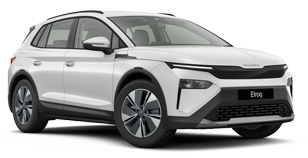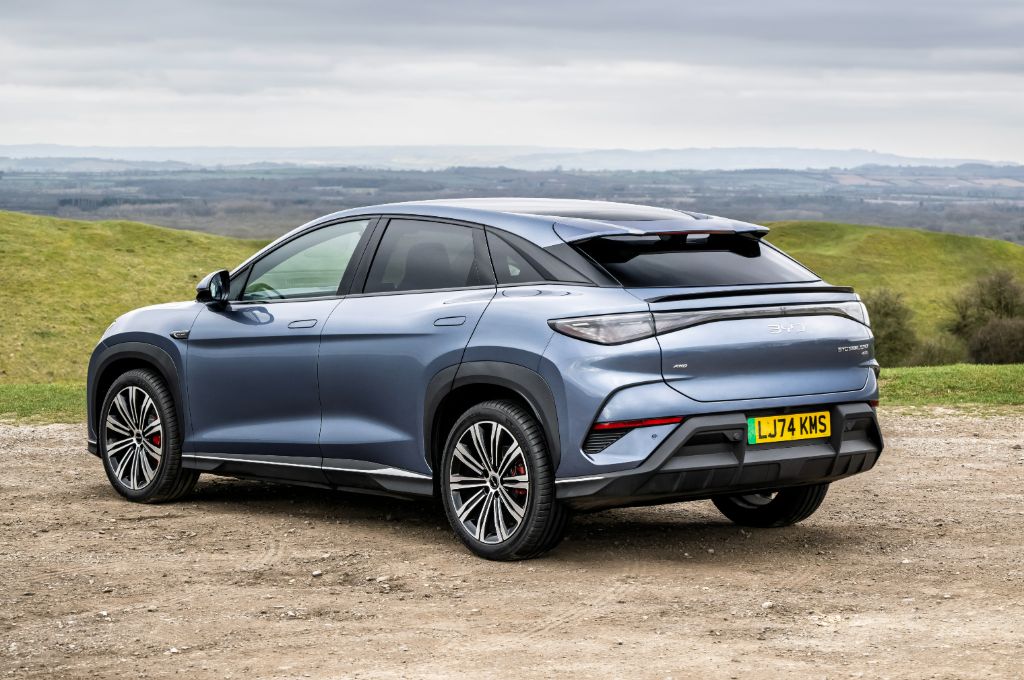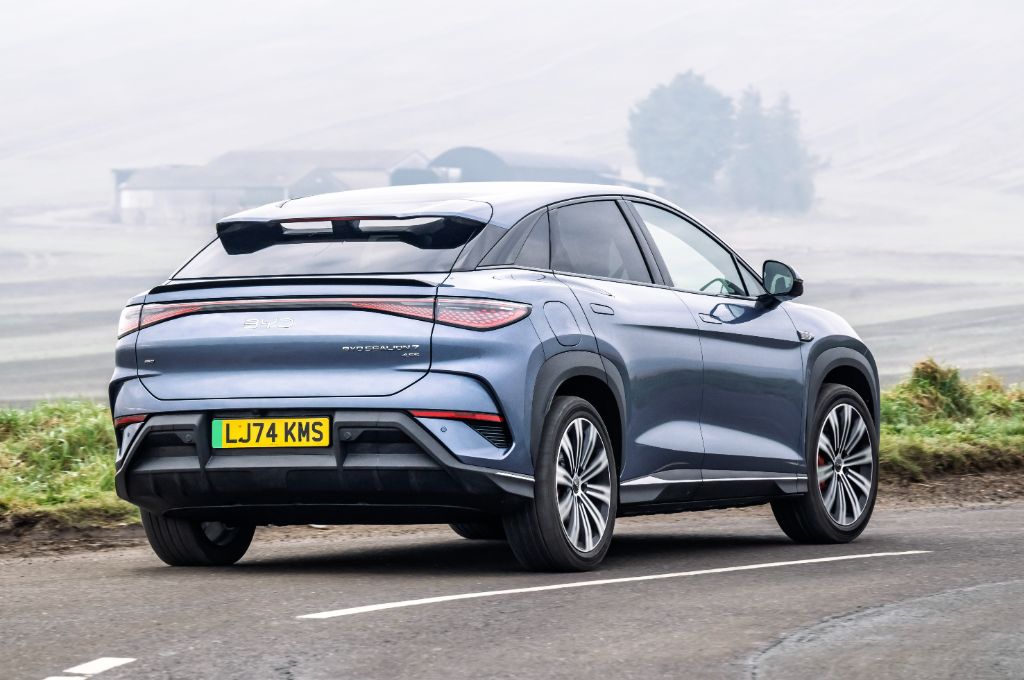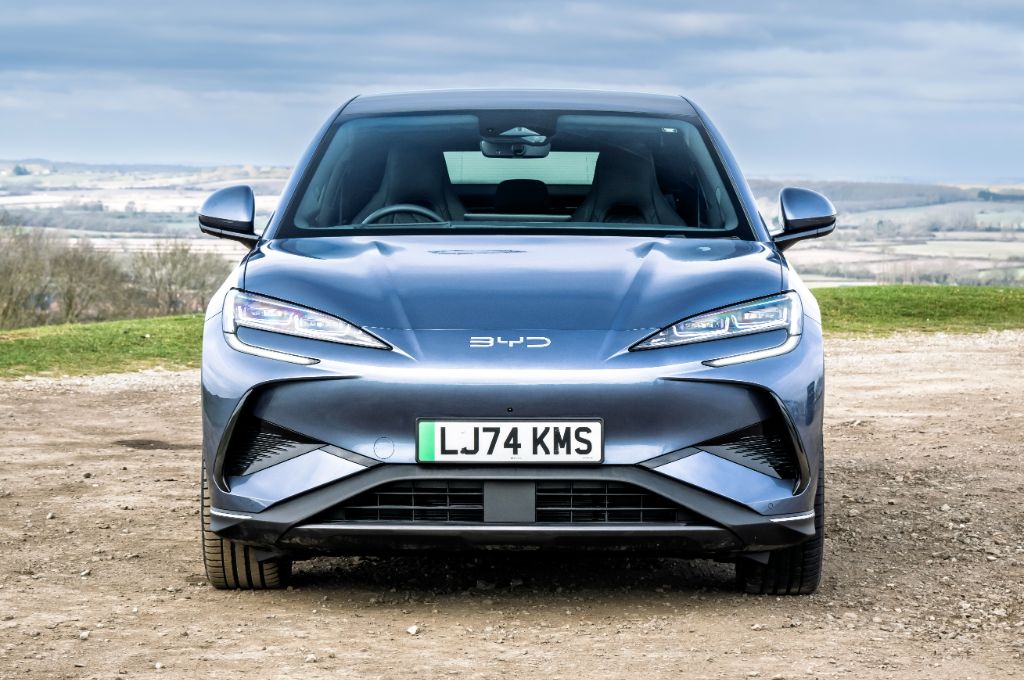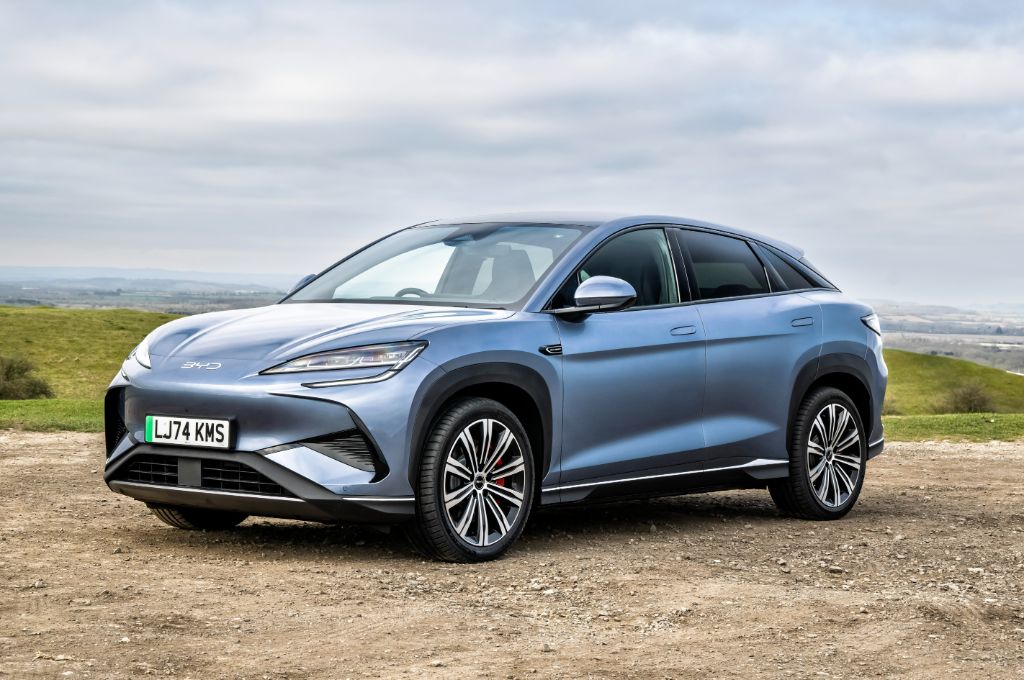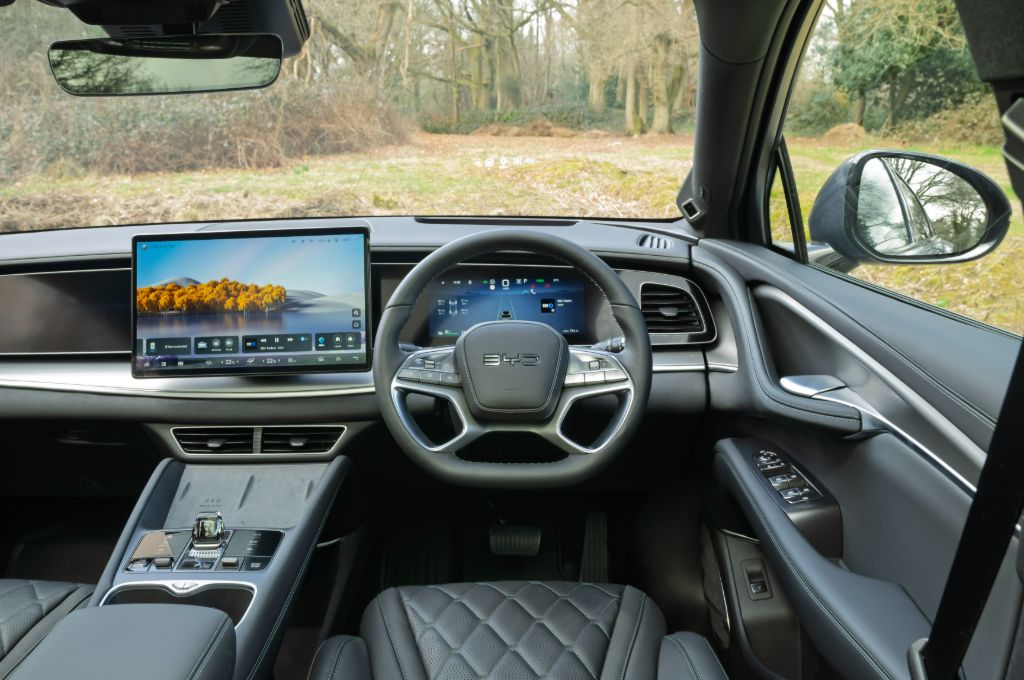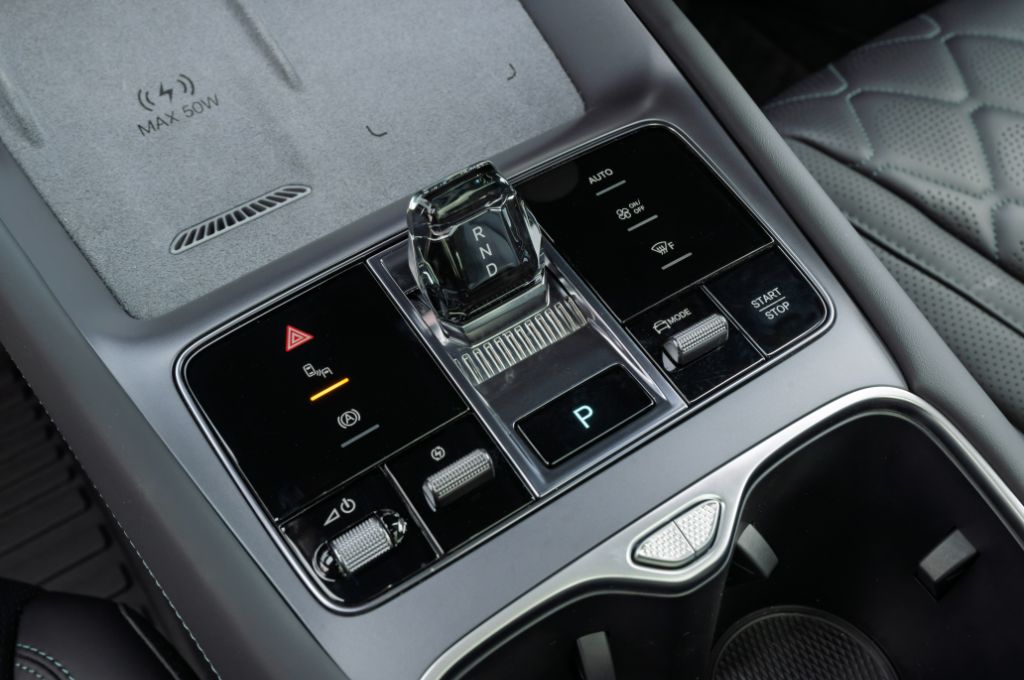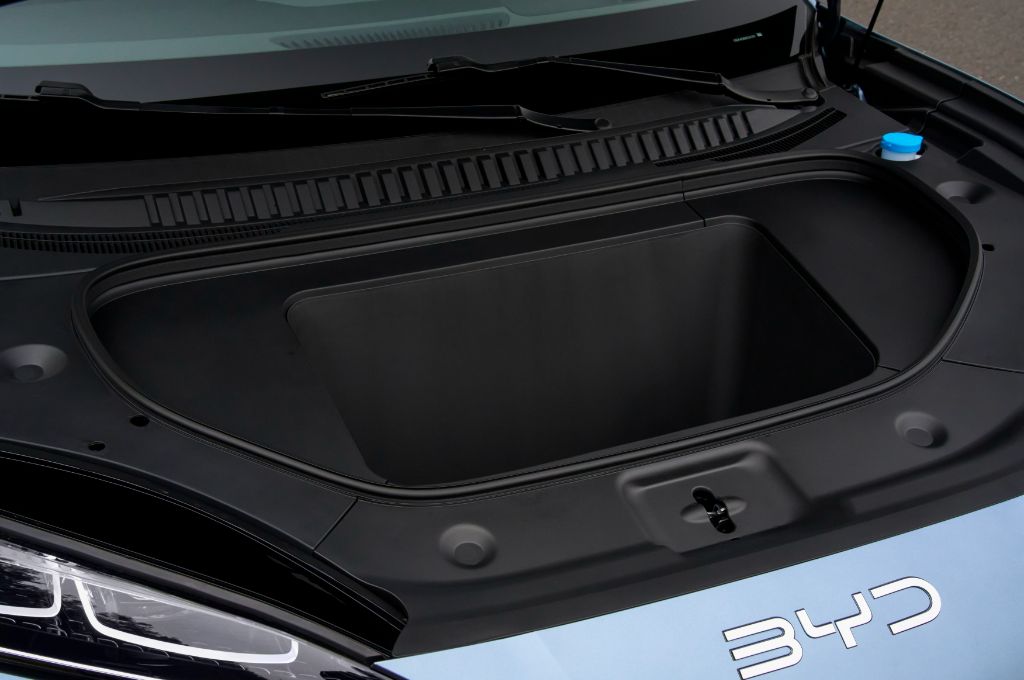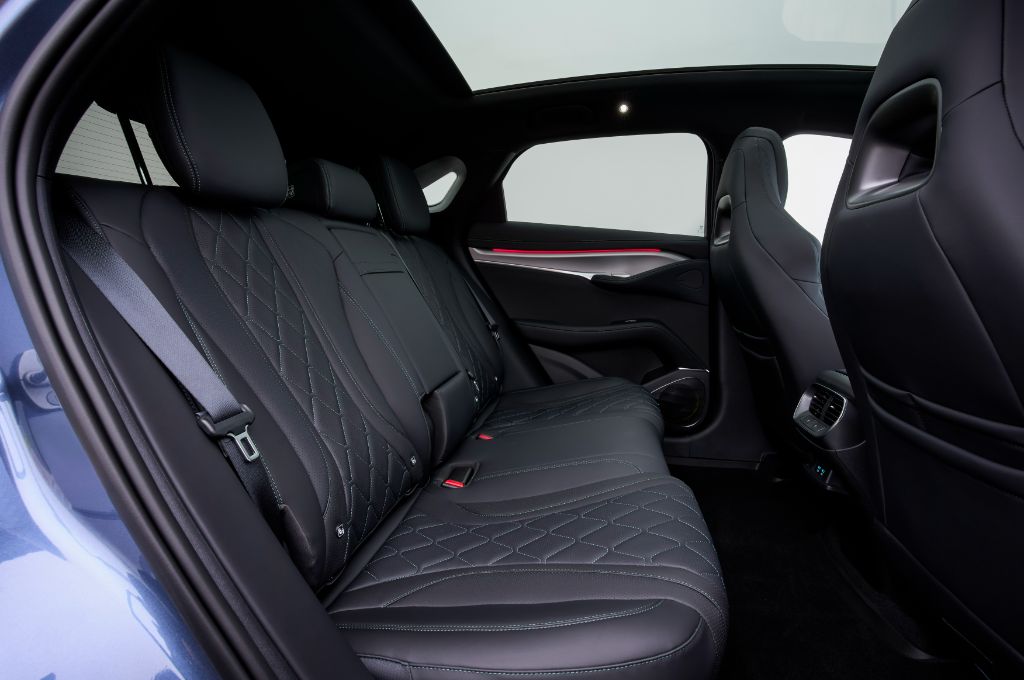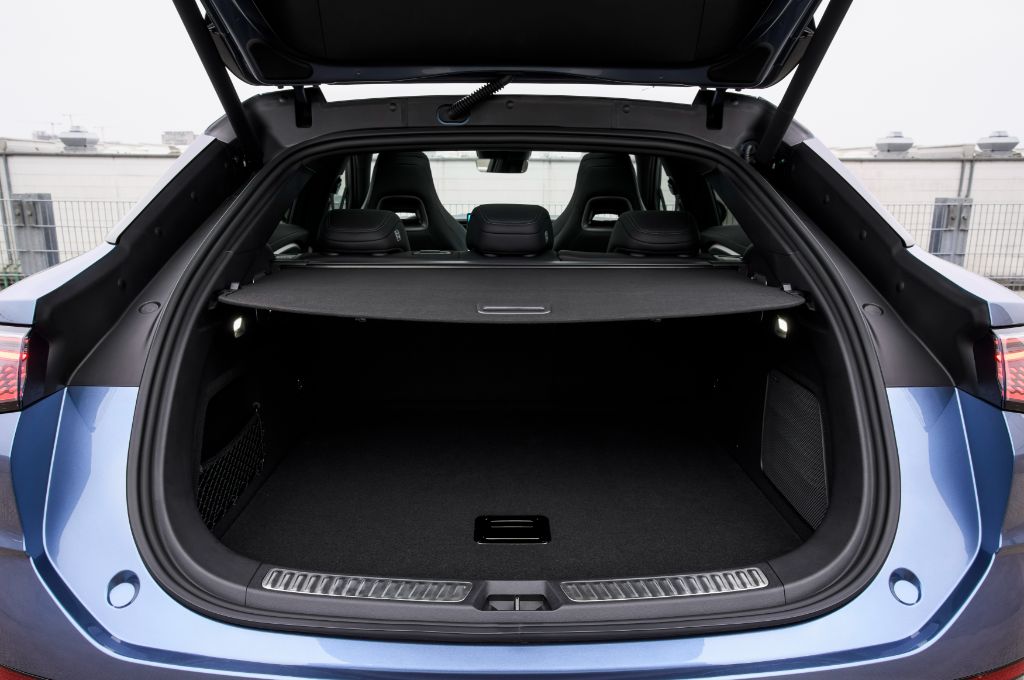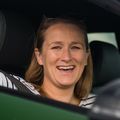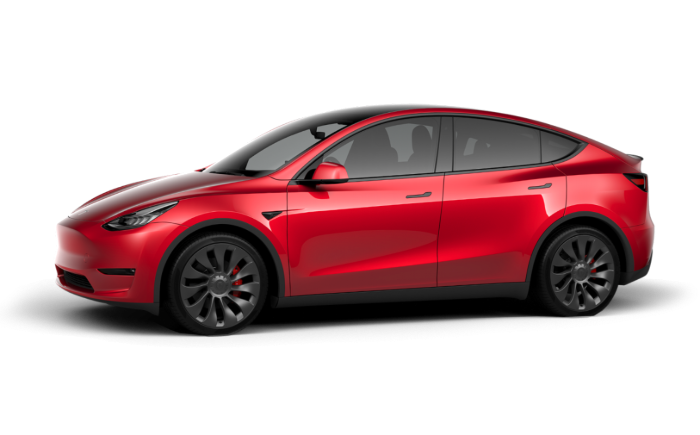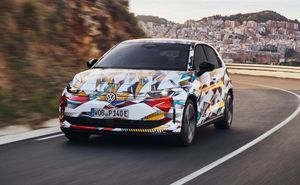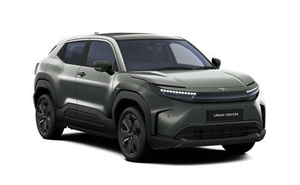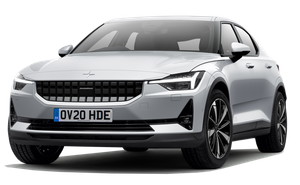Introduction
The BYD Sealion 7 is the latest in the ocean series of cars from Chinese manufacturer, BYD. It sits on the same platform as the Seal saloon, but at 4.8-metres long and with a coupe-SUV shape and stance, this is the bigger, family-focussed option in BYD’s lineup.
There are a couple of batteries to choose from, both offering close to 300 miles of range, plus you can opt for single motor, rear-wheel drive model with more modest performance or a full-fat, all-wheel drive variant that gets over 500bhp and will do 0-62mph in 4.5-seconds.
There’s no seven-seat option, though; the ‘7’ in the Sealion 7 name is there purely to confuse video presenters. Or, possibly, because a lot of brands apply bigger numbers to bigger cars, and smaller numbers to smaller cars, to make the model hierarchy clearer. Hence BYD Atto 3 for the family hatch, and Sealion 7 for the big SUV. No idea why the Seal saloon and Dolphin hatchback haven’t got numbers. Maybe BYD just forgot?
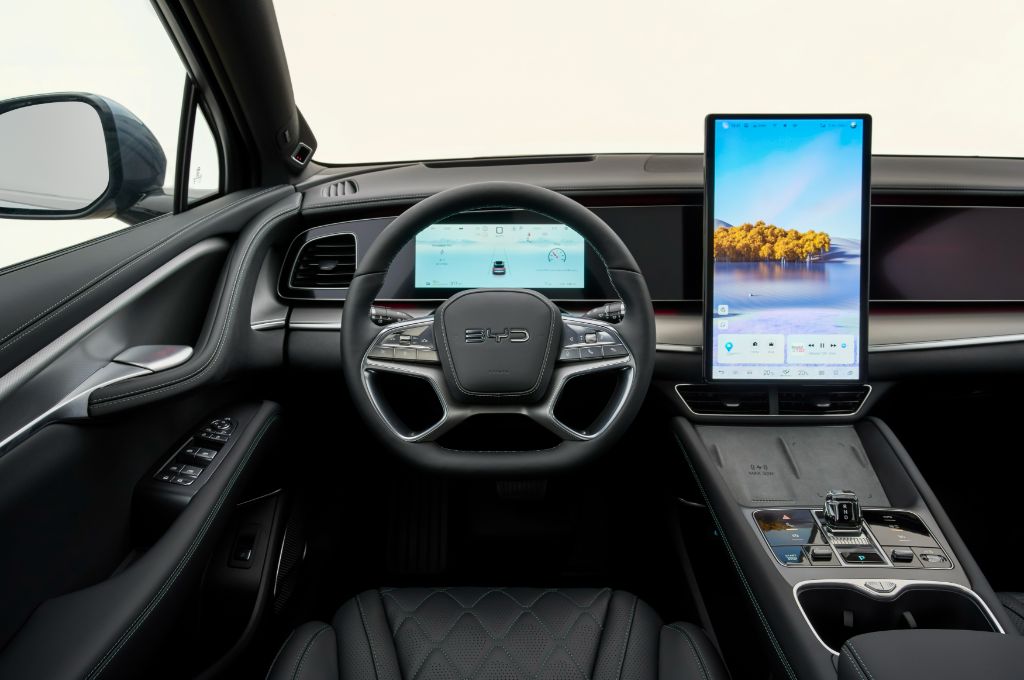
Range, Battery and Charging
One of BYD’s biggest selling points is its excellent battery technology. BYD makes its own batteries (and almost every other element of its vehicles) in-house. The ‘Blade’ battery uses lithium-iron phosphate (LFP) battery chemistry with the cells arranged in a long, blade-like arrangement rather than in a mattress of rectangular or cylindrical cells, as is common in other EVs. The battery is also free of cobalt, which makes it better for the environment, and is used to enhance the structural rigidity and crash-worthiness of the vehicle. It’s all very clever.
You can read more about BYD Blade battery tech here, and all about the pros and cons of LFP vs the other common type of battery - lithium-ion NMC – here.
Suffice to say that the Blade battery is tried-and-tested battery tech that’s already been in use around the world for some years now, so there’s no need to worry about it being new or unknown.
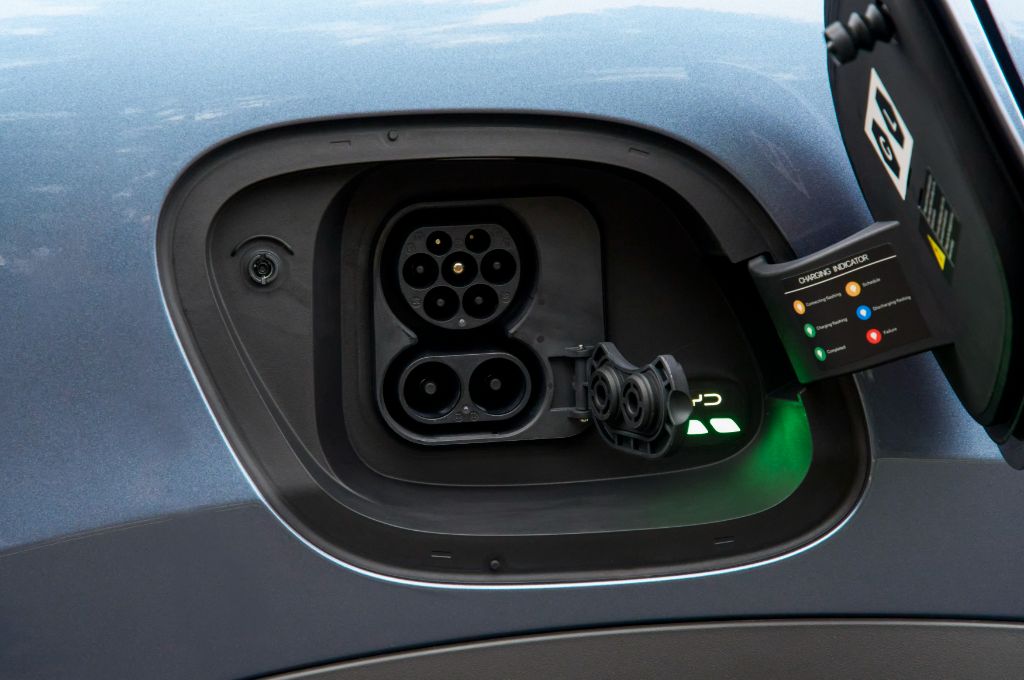
In the Sealion 7 there’s the option of an 82.5kWh battery, which you can have with rear-wheel drive, 301bhp and a 0-62mph in 6.7 seconds in the Comfort model for a range of 300 miles. The same battery is offered with four-wheel drive in the Sealion Design AWD, for a range of 283 miles, but the bigger 91.3kWh battery is only offered in the range-topping Excellence AWD. That manages a WLTP range of 312 miles, despite having 523bhp, for a 0-62mph of 4.5 seconds.
The smaller battery models – the Comfort and Design – both charge at up to 150kW, which is on par with rivals like the Skoda Enyaq and Ford Capri. Go for the big battery Sealion 7 Excellence AWD and charging speed peaks at 230kW, which is up there with Kia and Hyundai for snappy rapid-charging performance. Both are capable of a 10-80% battery top-up in under around 30 minutes – closer to 25 minutes in the Excellence.
We can’t speak for real-world range, as our time in the BYD Sealion has been pretty limited so far, but it’s worth pointing out that other cars manage longer range for this sort of money. Not least the Tesla Model Y, which manages up to 373 miles in its longest-range variant.
The BYD Sealion 7 gets vehicle-to-load (V2L) charging so that you can charge your devices from the car’s battery – and a heat pump for more efficient winter driving as standard.
Practicality and Boot space
It’s pretty spacious, the Sealion. You get a 58-litre ‘frunk’, which’ll take all your cables and more, and there’s a 520-litre boot space that’s big enough for your double buggy or bevvy of labradors.
BYD states that there are 20 cubbyholes in the cabin itself, too, although I didn’t have time to find them all. There are certainly plenty of safe places to put your wallet out of sight, before forgetting which one you used and having to panic-search the entire car, I know that much!
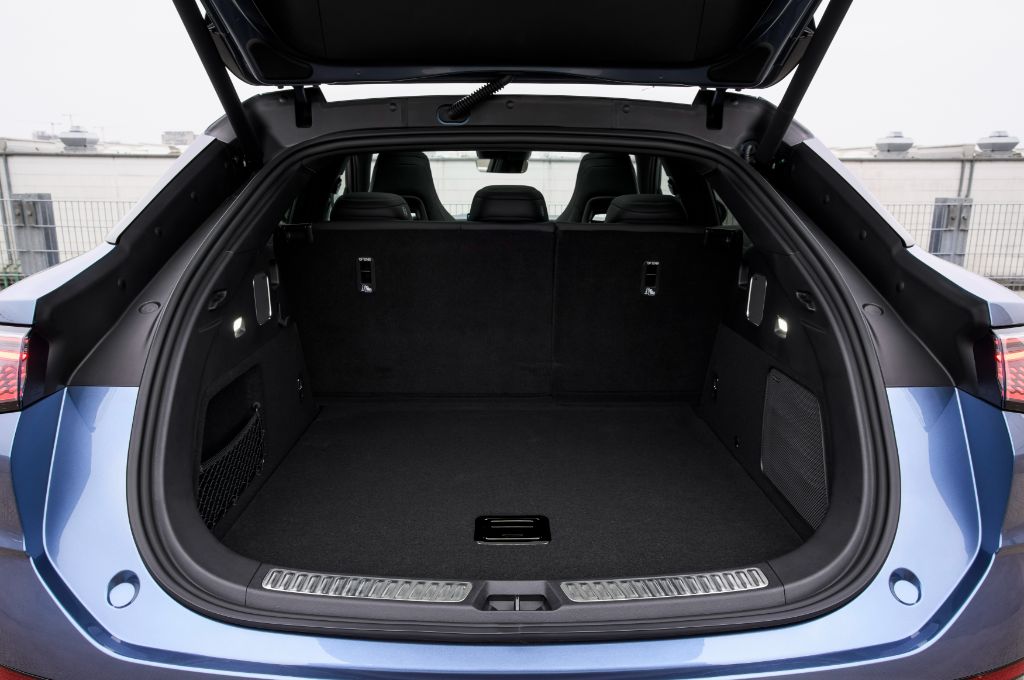
Interior, Design/Styling and Technology
The finish and perceived quality of the Sealion’s interior is definitely one reason why you might go for this over one of the better known alternatives. The materials feel really dense and classy (if a little like dolphin skin, although I promise it’s definitely not dolphin skin), and the general look of it is good, too.
You get the big, rotating touchscreen that BYD has as a party piece in most of its cars, although I can’t say that I personally see the point; it works just fine in panoramic mode, although some of you guys have told me that you like to use BYD’s screen in portrait mode when the nav is on. Guess it gives more screen space for the map, so you can see more of the road ahead on the map. The fact that you have the choice is a nice thing, no doubt.
It's reasonably easy to use, and the voice control is surprisingly good at responding to commands. Sure, I’d still like proper air-con buttons rather than the in-screen ones that the Sealion has, but to be honest this system works fine and it doesn’t take too long to get used to it.
Otherwise, you get all the features that you want including Apple CarPlay and Android Auto (although they don’t work with the screen in portrait mode), nav with charger search function, over-the-air software updates, DAB radio and Bluetooth.
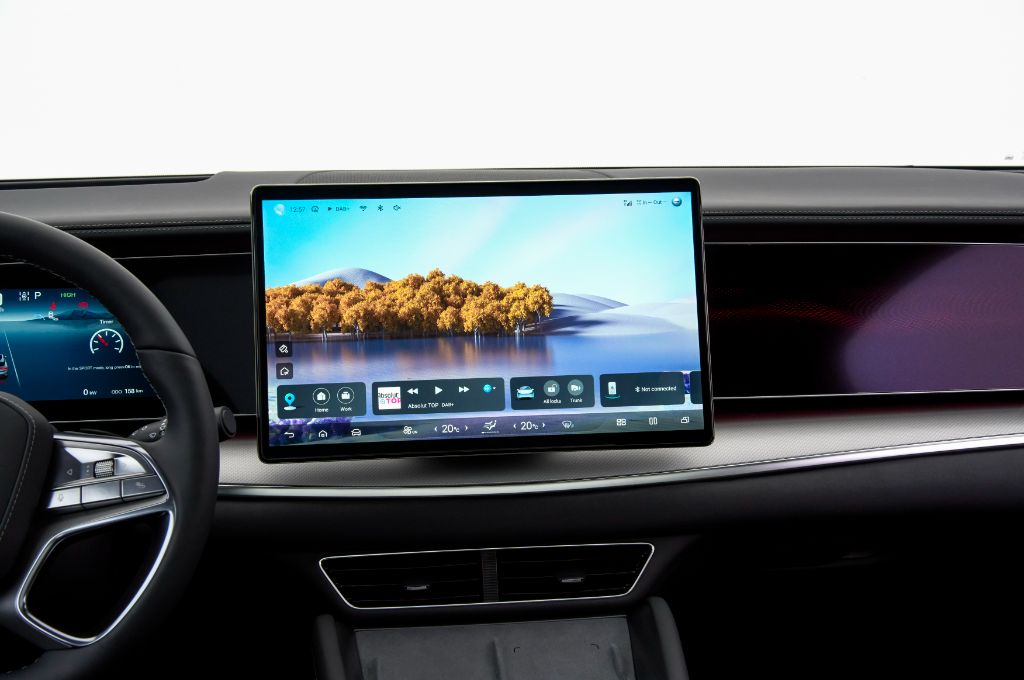
Motors, Performance and Handling
We've driven the BYD Sealion 7 in the UK, now, and to be honest it's just... fine. Nothing special yet nothing terrible, despite the huge performance in the Sealion 7 Design that we spent most of our time in. Ginny found the steering way too light for her tastes, and preferred it in Sport mode. I'm inclined to agree, but I'm more put off by the fact that steering feels very disconnected and a bit imprecise when you're mid-corner. I'd just like more precision and bite to it, even though I don't really mind lighter steering like the Sealion's. It certainly doesn't steer as well as the Tesla Model Y or Skoda Enyaq, let's say that! As for ride comfort, again it's just okay. It gets bumpy and fidgety over scrappy surfaces, and yet it's also quite softly sprung so feels floaty over bigger undulations, so it's far from the most composed ride. Again, the Enyaq or ID.4 are comfier options.
You have to really want the performance to justify the big battery, AWD Design or Excellence, though. I’d stick with the lower powered BYD Sealion, which will still do 0-62mph in 6.7 seconds even with the single, rear-wheel drive motor.
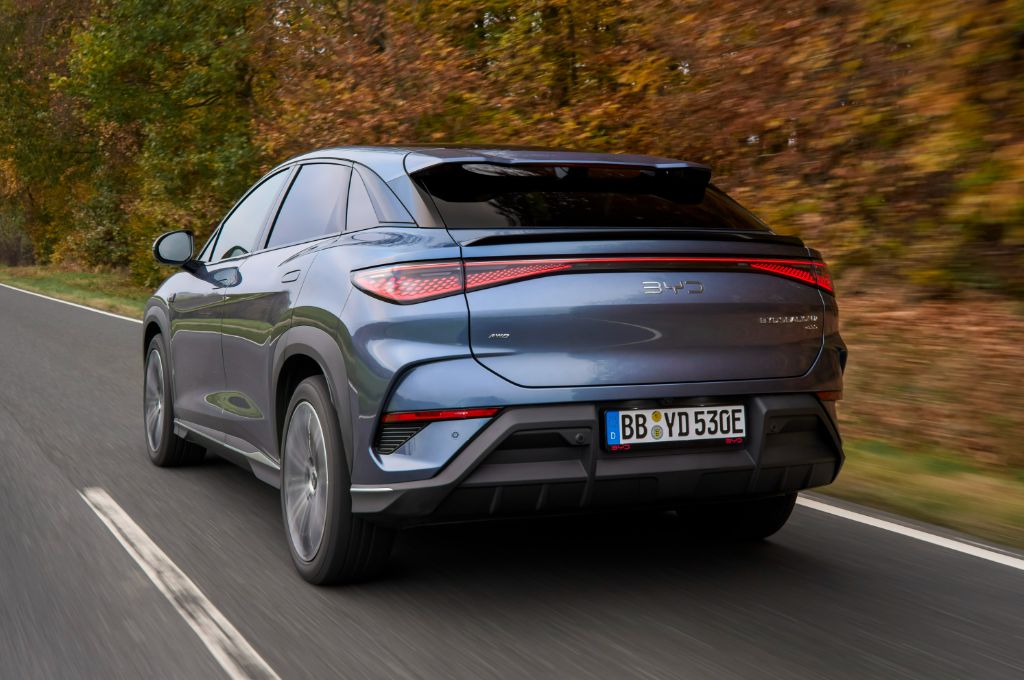
Running Costs and Pricing
The BYD Sealion 7 starts at under £47,000 for the base model, and goes up to £52,000 for the AWD Design. The top-spec Excellence AWD with that bigger battery costs a whopping £59,000. That's not cheap, is it, although finance deals do start from under £500 with a reasonable deposit of around £6,000 We’ll also have to wait and see what the real-world range and efficiency is, when we’ve had a proper drive in the Sealion.
We do know that it’ll have plenty of equipment as standard. Even entry-level Comfort gets heated and ventilated front seats, heated rear seats, keyless entry, 19-inch wheels, panoramic glass roof. Design adds 20-inch wheels and all-wheel drive, while Excellence adds head-up display, and nappa leather instead of the vegan leather of the other trims.
Every BYD comes with a six year, 93,750 miles warranty, while the battery is covered for eight years and 125,000 miles (and will be replaced or refurbished if it drops below 70% of its as-new state of health within that period).
Verdict
The BYD Sealion 7 seems like a fine electric family SUV, but is ‘fine’ enough when there’s this much competition? Well, probably not. With cars as good as the Skoda Enyaq and Tesla Model Y to compete with, the Sealion 7 needs to offer something really impressive to stand out from the crowd. If BYD can bring PCP finance costs in low enough then it will make headway against the established rivals, but it will need that value aspect to entice buyers away from more familiar brands.
Like the BYD Sealion 7? Try these...





